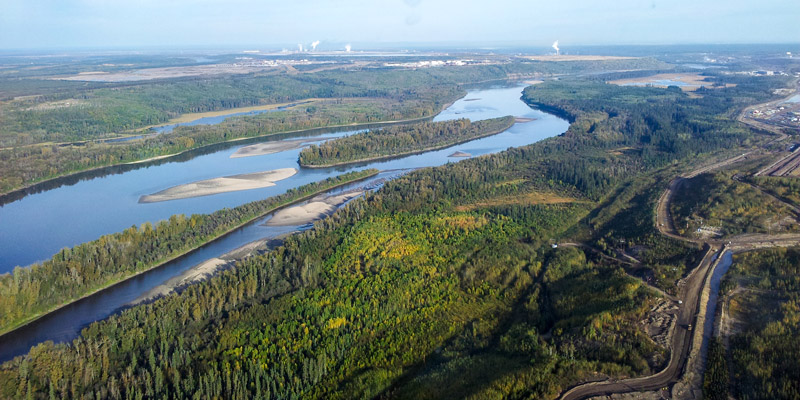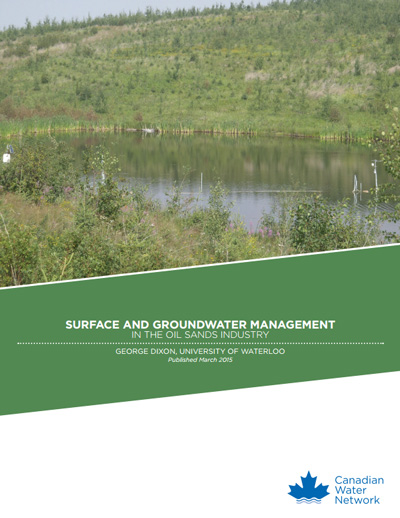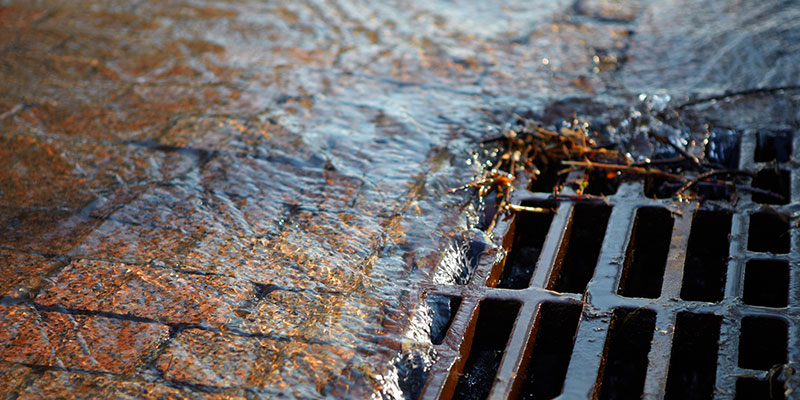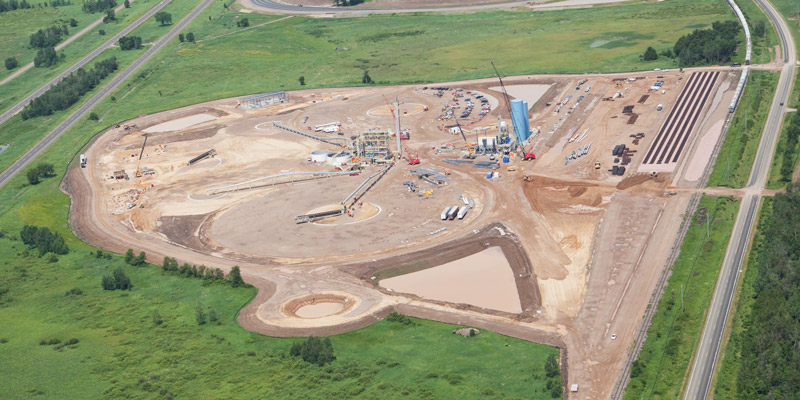Surface and Groundwater Management in the Oil Sands Industry
Principal Investigator - George Dixon, Vice President Research, Professor, University of Waterloo (2002-2012)

Challenge
A major concern regarding the Canadian oil sands is a complex mixture of compounds found in process water referred to as “naphthenic acid” (NA). There are concerns that substances like NAs that are present in process water could hinder the environmental health of aquatic reclamation options or escape into the Athabasca River, and insufficient past monitoring by outdated and inaccurate analytical methods has provided little valuable data to make scientific evaluations of safety and risk. NAs need to be analyzed, and toxicological/ecological endpoints are needed to monitor and assess the environmental health of oil sands aquatic reclamation strategies. A reclamation concept is the development of constructed wetlands, ponds, and lakes that receive oil sands tailing water, and will eventually be connected to the Athabasca watershed. In order for this to be a viable reclamation option this approach needs to be evaluated at the field scale. Finally, there is concern regarding the potential cumulative environmental and health effects downstream of the oil sands industry on the Athabasca River watershed.
This project, led by Dr. George Dixon, addresses the science of aquatic environmental issues associated with oil sands development that will lead to improved wastewater management.
Project
This project conducted research on the exposure (NA chemical analyses), fate (NA remediation processes) and effects (ecological/toxicological) of oil sands tailing waters. Through this project researchers have improved the ability to characterize the quantity of NAs. There is now greater understanding of toxicity in the complex NA mixture. Through this project, remediation methods were developed which could be used to detoxify oil sand process water, improving the water quality, and ultimately reducing the potential for impacts on the Athabasca River and tributaries.
The results of multiple laboratory studies found stresses associated with NA to both limit plant and invertebrate development and survival. However, though full-strength oil sand process water is toxic to most aquatic biota, toxicity declines through time as some classes of NAs begin to degrade. Therefore, over time oil sands process water reclamation become similar to reference sites. Although the food webs of reclamation become similar to reference sites as they age, important differences in food web structure remain. For example, succession trends are slower, and carbon production rates are lower than those observed in reference surface waters. These studies and many others contribute to our knowledge of aquatic environments to improve reclamation of lakes, ponds, wetlands, and fens in the post oil-sands landscape.
Outputs
- Knowledge was disseminated through publications, workshops and conferences and popular media. Recent publications born out of this work have led to nine newspaper articles, two television interviews, and six radio and audio webcasts.
- Researchers involved in this project have contributed to RAMP (Regional Aquatics Monitoring Program) Alberta industry report concerning the transport and toxicity of NA. www.ramp-alberta.org
- Development of modelling techniques designed to simulate the release of metals in sediments is being used in ongoing research by Suncor.
- Participation in workshops – “Wetland Technology Transfer” and “Development of a Regional Monitoring Program to Assess the Effects of Oil Sand Development on Wetland Communities.”
- Contributions to Cumulative Environmental Management Association (CEMA) Wetlands Manual
Publications:
- Grewer, D.M., Young, R.F., Whittal, R.M., Fedorak, P.M. 2010. Naphthenic acids and other acid-extractables in water samples from Alberta: what is being measured? Sci. Total Environ. 408(23): 5997-6010.
- Martin, J.W., Barri, T., Han, X., Fedorak, P.M., Gamal El-Din, M., Perez, L., Scott, A.C., Tiange Jiang, J. 2010. Ozonation of Oil Sands Process-Affected Water Accelerates Microbial Bioremediation. Environmental Science and Technology. 44(21): 8350–8356.
- Oiffer, A. A. L., Barker, J. F., Gervais, F. M., Mayer, K. U., Ptacek, C. J., Rudolph, D. L., 2009. A detailed field-based evaluation of naphthenic acid mobility in groundwater. Jour. Contam. Hydrol., 108: 89-106.
- Kavanagh, R.J., Frank, R.A., Oakes, K.D., Servos, M.R., Young, R.F., Fedorak, P.M., Mackinnon, M., Soloman, K.R., Dixon, D.G., Van Der Kraak, G. 2011. Fathead minnow Pimephales promelas reproduction is impaired in aged oil sands process-affected waters. Aquat. Toxicol.101:214-220.
- Kovalenko, K.E., Ciborowski, J.J.H., Daly, C., Dixon, D.G., Farwell, A.J., Foote, A.L., Frederick, K.R., Gardner Costa, J.M., Kennedy, K., Liber, K., Roy, M.C., Slama, C.A., Smits, J.E.G. 2013. Food web structure in oil sands reclaimed wetlands. Ecological Applications. 23(5):1048-1060.
Outcomes
- Improved communication between scientists and their counterparts in industry and government. Knowledge transfer happened at workshops where industry members became aware of the complexity of oil sands NAs.
- Potential changes in policy, on seepage of process waters into rivers.
- Increased awareness in multiple sectors (industry, academia, government) as well as general public of water’s role in the oil sands industry due to the research and resultant multiple media interviews and articles.





